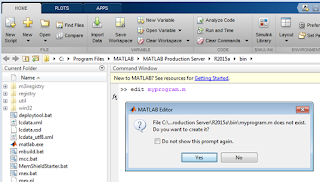Introduction
Any body which
posses the power of attracting pieces of iron (magnetic material) is known as a
magnet and the property of the body by virtue of which this attraction takes
place is known as magnetism.
Since lode stone possesses the
magnetism when it is taken out from the earth, it is called the natural magnet. Commercial magnets are
made artificially from iron and steel or alloy materials and they are called
artificial magnets. Artificial magnets
can be made either by rubbing a piece of iron or steel with the load stone or by passing a electric current through a coil
over the piece of iron or steel. Magnets prepared by the second method are
called electro magnets.
Magnets can be classified as being permanent or temporary, depending on
their ability to retain magnetism. The material retain their magnetism for a
long time after removal of magnetization force are called permanent magnets( e.g.:
alnico) they are used in small dc motors, measuring instruments, speedometers,
speaker etc. the substances which loses most of their strength when the
magnetizing force is removed is termed as temporary magnet material( soft iron
materials)
Magnetic poles
Classification of magnetic materials
1.
Para-magnetic materials: they are
not strongly attracted by the magnet. E.g.: aluminium, tin, platinum, manganese
etc. their relative permeability is small but positive
2.
Dia-magnetic materials: they are
repelled by the magnet. E.g.: Zinc, Mercury Lead, Sulphur , and Copper etc. their relative
permeability is slightly less than unity.
3.
Ferromagnetic materials: they are
strongly attracted by the magnet. E.g.: Iron, Steel, Nickel some of their
alloys etc. their relative permeability is very high. They are further
classified in to two:
o
Soft magnetic materials: do
not retrain their magnetism for any appreciable time after the magnetizing
force has been removed. They have very high relative permeability. E.g.: soft Iron,
silicon steel soft ferrites etc.
o
Hard magnetic materials
retain their magnetism for a long time. They are used for making permanent
magnets and hence called permanent magnetic materials. E.g.: carbon steel,
cobalt steel, alnico, hard ferrite etc.
Magnetic Field and Properties
The space around the poles of a magnet
is called the magnetic field and is
represented by magnetic lines of force. The total number of lines of force
surrounding a magnet is called the total magnetic
flux (f). The SI unit of magnetic flux is Weber
(Wb)
The flux passing through a material
or a plane at right angle to the direction of flux per unit area is called magnetic flux density. The unit is
Tesla.
B = f/A
Magnetic Field Strength designated by H at any point is defined as the force experienced by a u\nit north pole when placed at that point.

Magnetic
potential at a point in the magnetic field is defined as the work done in
moving a unit north pole from infinity to that point against magnetic force.
Magnetic permeability is the measure of the ability of a material to support the formation of a magnetic field within itself.
and m = m0mr
where, m0
is called the permeability of free space,
and is equal to 4px10-7H/m. and mr
= m/m0
is called the relative permeability.
The reciprocal of magnetic permeability is magnetic reluctivity.
Magnetic susceptibility is defined as
the ratio of intensity of magnetization to the magnetizing force and is
represented by c.












0 comments:
Post a Comment